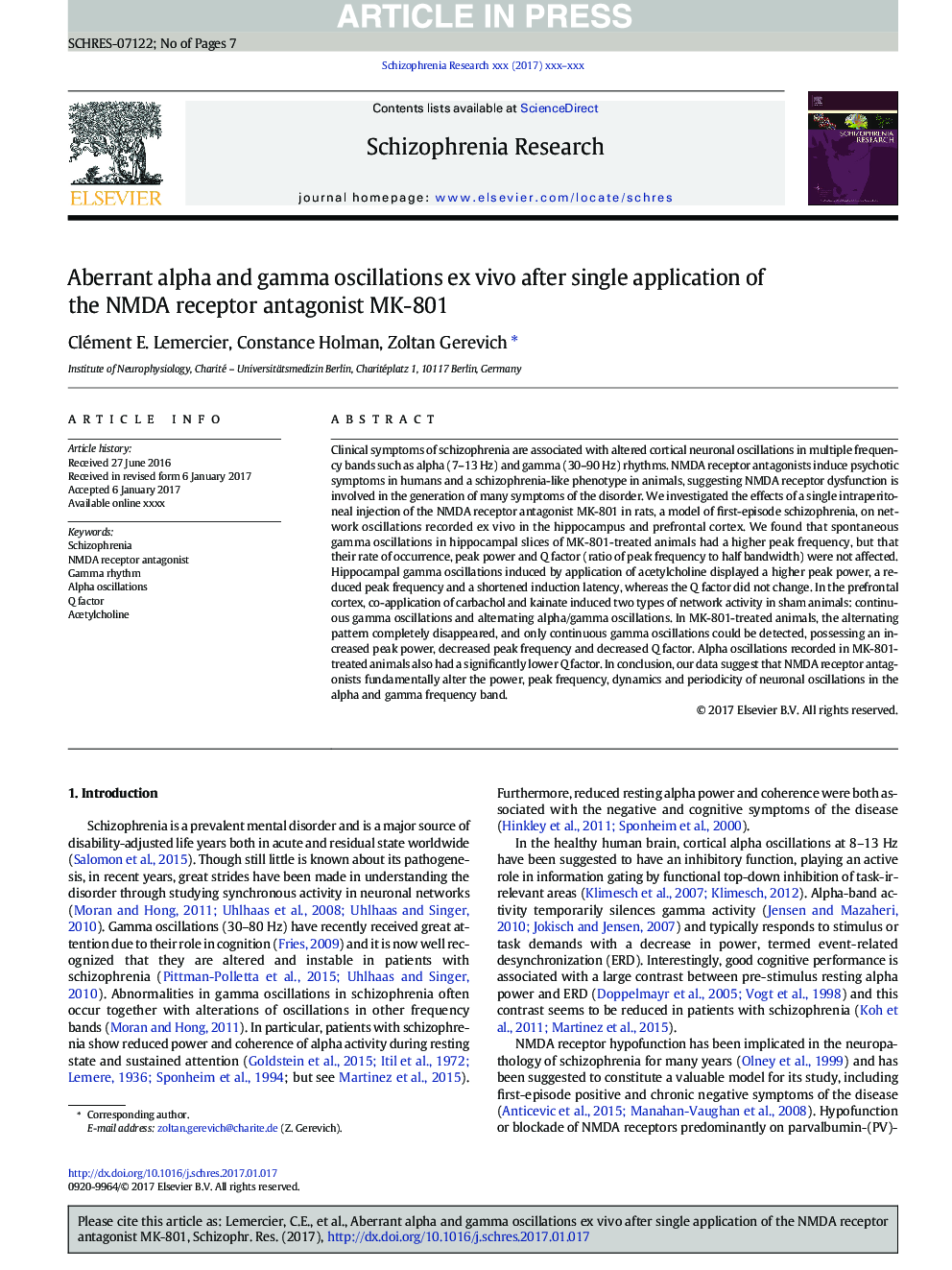| Article ID | Journal | Published Year | Pages | File Type |
|---|---|---|---|---|
| 4934856 | Schizophrenia Research | 2017 | 7 Pages |
Abstract
Clinical symptoms of schizophrenia are associated with altered cortical neuronal oscillations in multiple frequency bands such as alpha (7-13Â Hz) and gamma (30-90Â Hz) rhythms. NMDA receptor antagonists induce psychotic symptoms in humans and a schizophrenia-like phenotype in animals, suggesting NMDA receptor dysfunction is involved in the generation of many symptoms of the disorder. We investigated the effects of a single intraperitoneal injection of the NMDA receptor antagonist MK-801 in rats, a model of first-episode schizophrenia, on network oscillations recorded ex vivo in the hippocampus and prefrontal cortex. We found that spontaneous gamma oscillations in hippocampal slices of MK-801-treated animals had a higher peak frequency, but that their rate of occurrence, peak power and Q factor (ratio of peak frequency to half bandwidth) were not affected. Hippocampal gamma oscillations induced by application of acetylcholine displayed a higher peak power, a reduced peak frequency and a shortened induction latency, whereas the Q factor did not change. In the prefrontal cortex, co-application of carbachol and kainate induced two types of network activity in sham animals: continuous gamma oscillations and alternating alpha/gamma oscillations. In MK-801-treated animals, the alternating pattern completely disappeared, and only continuous gamma oscillations could be detected, possessing an increased peak power, decreased peak frequency and decreased Q factor. Alpha oscillations recorded in MK-801-treated animals also had a significantly lower Q factor. In conclusion, our data suggest that NMDA receptor antagonists fundamentally alter the power, peak frequency, dynamics and periodicity of neuronal oscillations in the alpha and gamma frequency band.
Related Topics
Life Sciences
Neuroscience
Behavioral Neuroscience
Authors
Clément E. Lemercier, Constance Holman, Zoltan Gerevich,
